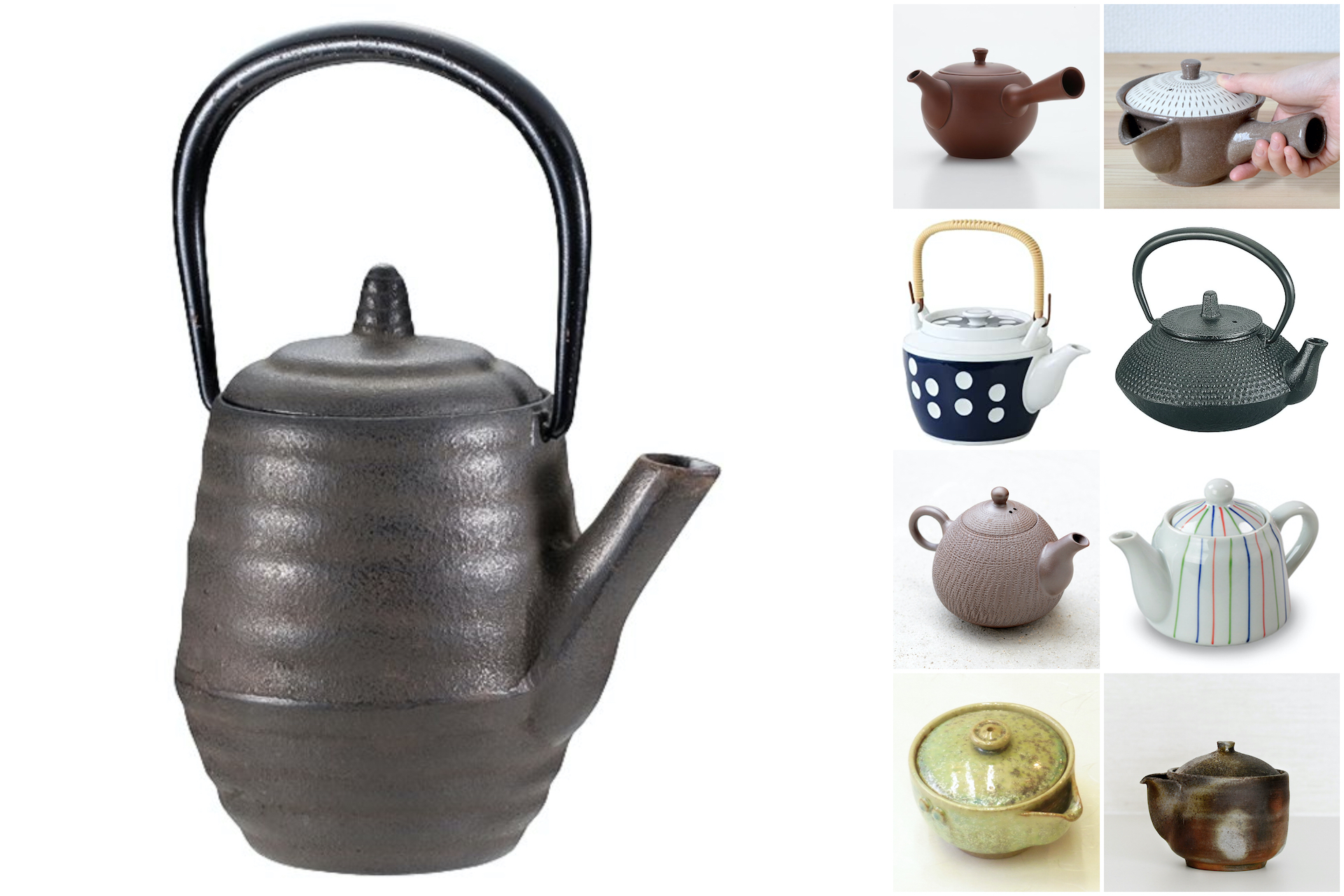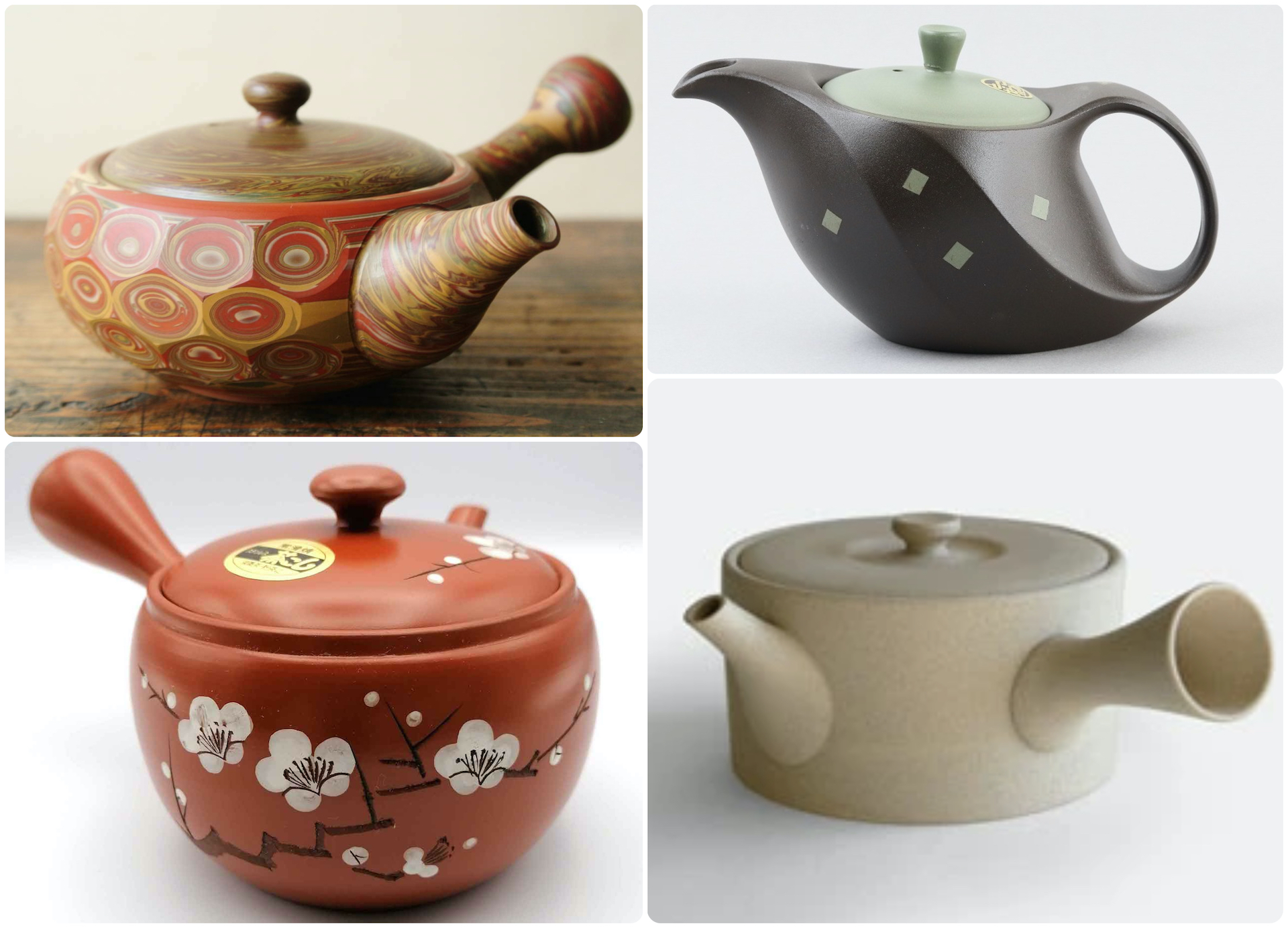
The Japanese use a wide variety of tools and vessels to prepare and serve food and beverage. This post is devoted to TEA POTS called KYŪSU 急須. They are typically small, used to brew just a few portions of tea (each about 100-120ml/scant 4 fluid ounces) at one time.
The four most frequently encountered kyūsu shapes are:
YOKODÉ (side handle) 横手型
(pictured above, top row)
UWADÉ (top handle) 上手型
(pictured above, 2nd row from top)
USHIRODÉ (back handle) 後手型
(pictured above, 3rd row from top)
HŌBIN (handle-less) 宝瓶型
(pictured above, bottom row)
Kyūsu are crafted from various materials including heat-resistant glass and several types of clay:
- Earthenware — clay fired at a low temperature (1,000–1,150 degrees Celcius) that becomes porous and coarse; it is glazed and re-fired.
- Stoneware — clay fired at a high temperature (1,200 degrees Celcius) during which the vessel becomes non-porous.
- Porcelain — is a hard, translucent white ceramic fired at 1,200 to 1,450 degrees Celcius, decorated with glaze and then re-fired.

Tokonamé Yaki 常滑焼
One kind of stoneware that is especially well-regarded when choosing tea ware is unglazed Tokonamé-yaki from Aichi Prefecture. It is typically fired at 2012F /1100C or higher.
Some of the characteristics of Tokonamé-yaki that make these wares especially suitable for making tea are:
- The iron oxide in the clay reacts with tannins in the tea, removing bitterness to create a softer tasting tea.
- The pot is light-weight making it easy to maneuver, pour from.
- The lid is tight-fitting because of a technique known as futa suri 蓋すり(“lid rubbing”) that is used when making the pot. A snug lid means the temperature of the liquid in the pot is maintained.
Care and Maintenance of Tokonamé-yaki
With use over a period of time, ceramic wares can become more beautiful when care is taken to clean and dry the pieces properly.
Remove spent tea leaves and rinse with hot water after each use. Avoid soaps and detergents, avoid scrubbing (if need be, use a soft-bristled toothbrush and baking soda to remove problematic stains).
Air-dry completely before putting away. Place the rinsed pot upside-down on a soft, absorbant towel for 30 minutes or more. Invert to expose the inside to air and dry for another 30 or more minutes.
When you have gathered tea and pot and are ready to prepare and enjoy making tea, visit my PROJECT New Tea post for details on brewing GREEN TEA.
Download a copy of my May 2023 newsletter about Japanese GREEN TEA and making cold-brew for hot weather.




